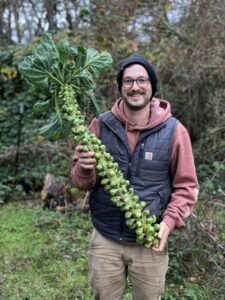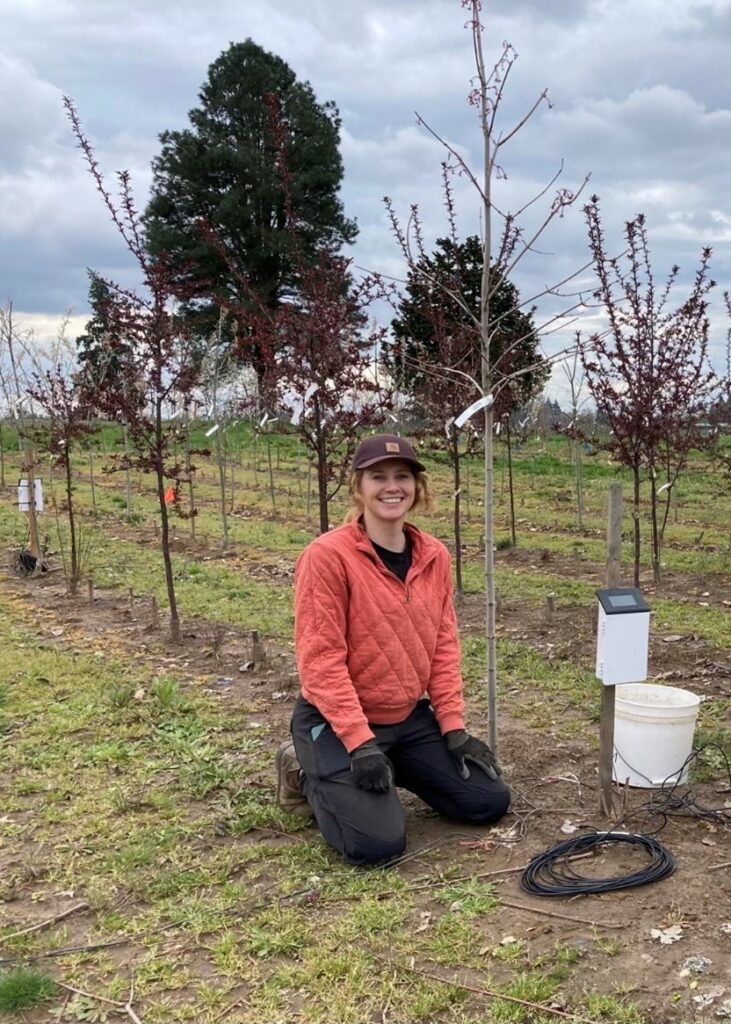Highlights:
- Shade tree growers need to be prepared for the effects of climate change in Oregon.
- In order to equip growers with the tools necessary for production success, we aim to determine critical shade tree stress thresholds, characterize plant responses to drought conditions, and correlate remotely collected spectral images with ground based plant water stress measurements.
- Previous studies have sought drought response measurements for Acer rubrum (Red Maple) and Quercus rubra (Red Oak), but never in a nursery production setting.
- We aim to disseminate this information to Oregon shade tree growers at the completion of this experiment with the hope to aid growers in making data driven irrigation decisions and demonstrate the use of these technologies in nursery production settings.

The Problem:
In Oregon’s Willamette Valley, the heart of the nursery country, rainfall is scarce during the summer and humidity is low. Oregon’s dry summer conditions can lead to low moisture stress conditions for maples and oaks in normal years. Plant stress resulting from low soil moisture, high heat, and low relative humidity have been exacerbated in recent years with the increasing frequency of heatwaves and drought. Drought and heat stress scorch the maple and oak canopies, which can lead to decreased plant quality and economic losses for shade tree growers. Sensor-based technologies can be used to model plant responses to environmental gradients to develop warning systems to help growers prevent stress and bridge a knowledge gap in the nursery production industry regarding drought responses.
How are we studying plant stress responses?
Starting late June 2022, we will implement two irrigation treatments (well-watered and drought) in our shade tree planting with each row having independent irrigation control. The well-watered rows will be maintained at a soil water potential of >-1.0 mPa. The drought treatment rows will be allowed to naturally dry down to a soil water potential of -4 mPa. If during the experiment, our metrics (stomatal conductance and stem water potential) do not show considerable responses at -4 mPa tension, we will allow the drought treatment to continue to dry down progressively (-1 mPa) until stress is evident.
Why and how do we measure stem water potential?
Plant water status is commonly defined in terms of water potential or the ability of the water to do work. In most cases, well watered plants have “high” water status and drought conditions lead to a “low” water status (Levin and Nackley 2021). Using the pressure chamber, we will take midday stem water potential measurements twice weekly from 12pm-3pm. This time frame is important because it represents the time of day where leaf transpiration is at its maximum.

First, we will cover the leaf and stems to be measured with an opaque bag for at least 10 minutes before pressurization to allow the plant to stop transpiring. Once we excise the sample from the tree it should be placed into the pressure chamber or “pressure bomb” within 30 seconds (Levin 2019). Once the stem is placed into the chamber and pressure is applied, the amount of pressure that it takes to cause water to appear at the cut surface tells us how much tension the stem is experiencing.
Why and how do we measure stomatal conductance?
We measure stomatal conductance using a porometer that measures the degree of stomatal openness and the number of stomata (Licor.com). This indicates the plant’s physiological response to its current environment. If a plant is stressed, it will tend to close its stomata and lower the stomatal conductance rate. We will be using a combination of the LI-6800 Portable Photosynthesis System and the LI-600 Porometer/Fluorometer to make our measurements twice a week from 12pm-3pm.
For more information:
Please stay tuned in the coming months for more blog posts about how we will find plant stress thresholds by measuring the hydraulic conductivity of these shade trees. We will also correlate remotely collected spectral and thermal images with our ground based plant stress measurements to demonstrate how implementing a UAS equipped with a multispectral and thermal camera can be used to detect water stress in nursery production.

















